
Teddy Bear Cholla on Henderson Trail in Santa RosaSan Jacinto National Monument, California
The teddy-bear cholla ( Cylindropuntia bigelovii) is a cactus native to California and Arizona (USA) and northwestern Mexico. They grow in desert regions at elevations from 30 to 1100 meter (100 to 3600 feet). It is an attractive plant, having a soft appearance due to its solid mass of very formidable spines that completely cover the stems.

TeddyBear Cholla (Opuntia Bigelovii) Stock Photo RoyaltyFree FreeImages
Hens & Chicks Mother of Thousands Echeveria Teddy Bear Cholla Soft Succulents Public Gardens with Succulents Succulent Cafe - Oceanside, CA Ethnobotanical Garden - Oaxaca, Mexico Huntington Botanical Gardens - San Marino, CA Private Gardens with Succulents Living Succulent Wall - San Francisco, CA Waterwise Cactus Garden - Los Angeles, CA

Teddy Bear Cholla lives up to Jumping Cholla nickname AZ Wonders
The Teddy Bear Cholla has a distinct appearance that sets it apart from other cacti. Its branches, resembling a cuddly teddy bear from afar, are in fact covered in numerous spines. These spines have microscopic barbs that make them difficult to remove once they get stuck. This mesmerizing cactus grows to about five feet tall and forms thickets.

Teddy Bear Cholla Desert Horizon Nursery
Cylindropuntia bigelovii is a plant of the Sonoran Desert, growing in exposed areas with full sun. It most resembles silver cholla (which has a similar range), the main difference being that the spines of the teddy bear cholla are of equal length (between 1 and 0.5 inches), whereas the other species has spines of varying lengths. There are four.
Teddy Bear Cholla Photos, Diagrams & Topos SummitPost
Trail through teddybear cholla. NPS / Brad Sutton Approximately 12 miles (20 km) south of the park's north entrance is the 0.25 mile (0.4 km) Cholla Cactus Garden Nature Trail; this flat loop leads hikers through nearly 10 acres (4 hectares) of landscape dominated by the teddybear cholla.

Teddy Bear Cholla
The teddy bear chollas are one of the most unique plants in the cactus family. Because of its distinct yellow flowers and soft appearance, it's frequently planted for a low maintenance garden. The right care ensures these plants will attract desert birds like cactus wrens for long-term nesting.
Cannundrums Teddy Bear Cholla
Description Cylindropuntia bigelovii has a soft appearance due to its solid mass of very formidable spines that completely cover the stems, leading to its sardonic nickname of "teddy bear" or "frightened elias". The teddy-bear cholla stands 1 to 5 ft (0.30 to 1.52 m) tall with a distinct trunk.

Teddy Bear Cholla Star Nursery Garden and Rock Centers
Reflect on the irresistible charm of Cylindropuntia bigelovii, the Teddybear Cholla, and its significance in the desert ecosystem. Let the Teddybear Cholla remind us of the delicate balance and extraordinary beauty found in the desert's embrace. For more Cylindropuntia plants on Succulent City, please browse the Cylindropuntia genus page!
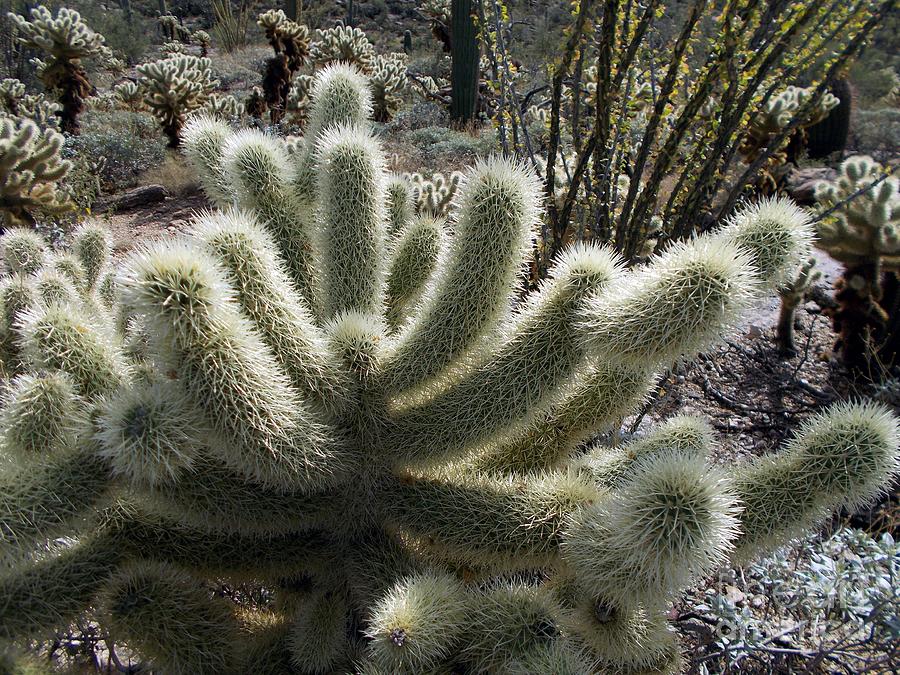
Teddy Bear Cholla Cactus Photograph by Jerry Bokowski Pixels
Teddy bear cholla, or jumping cholla ( C. bigelovii ), is native to northwestern Mexico and the southwestern United States and is sometimes cultivated as a desert ornamental for its showy golden spines. Chollas were formerly placed in the prickly pear genus ( Opuntia ). Home Science Plants Flowering Plants Animals & Nature cactus plant
Cannundrums Teddy Bear Cholla
Teddy Bear Cholla, Jumping Cholla Cylindropuntia bigelovii. Family Cactaceae, Cactus Family Form Stem succulent to 3 to 5 feet tall Range Sonoran Desert and warmer regions of Mohave Desert in southeastern California, southwestern Arizona, western Sonora and Baja California Habitat
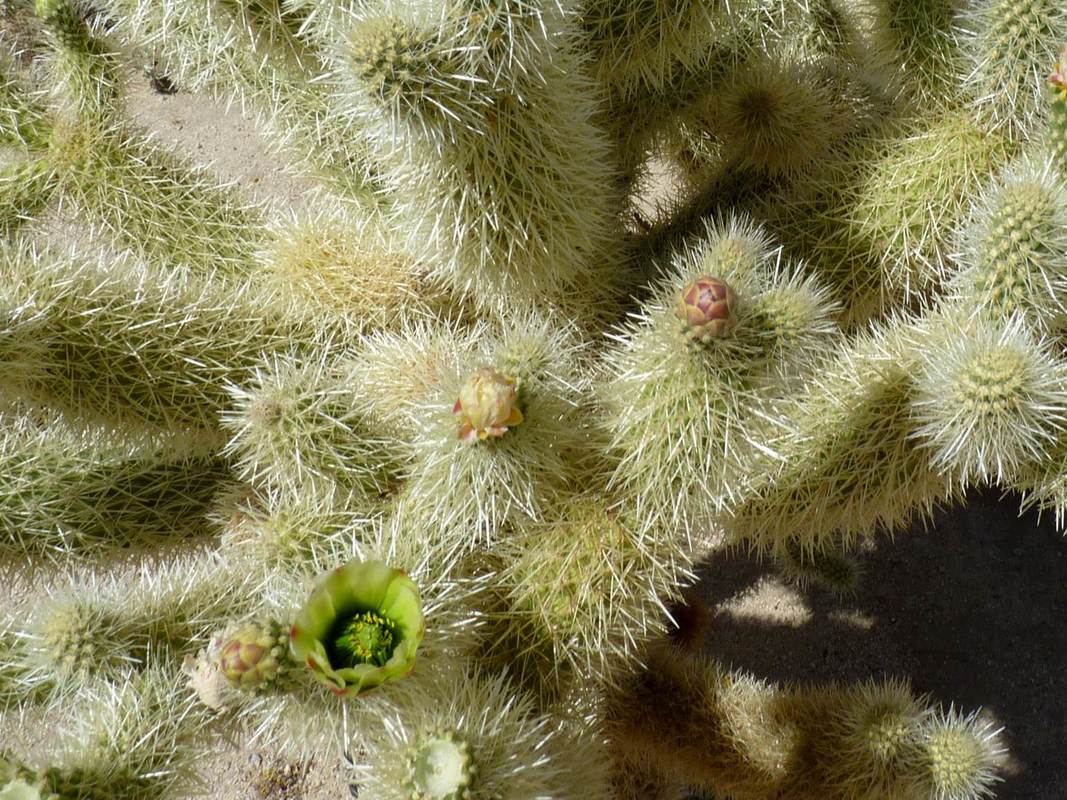
Teddy Bear Cholla Sky's The Limit Observatory & Nature Center
The Cylindropuntia bigelovii (Teddybear Cholla) is a slow-growing, small erect tree-like cactus commonly found in the Southwestern United States. It is easy to grow and drought tolerant. This cactus is known for its distinctive appearance, with its dense covering of spines resembling a teddy bear's fur.
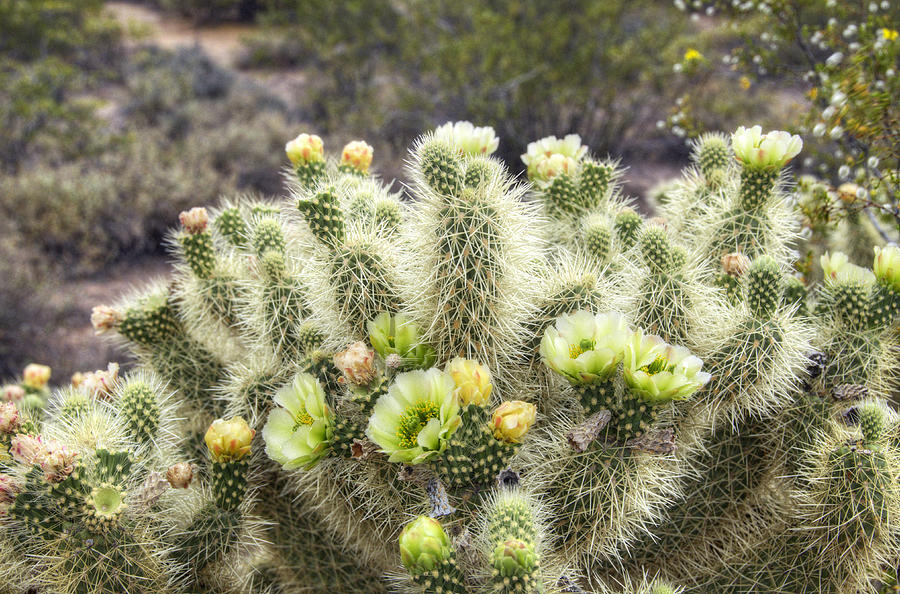
Teddy Bear Cholla Photograph by Saija Lehtonen
Cylindropuntia is a genus of cacti (family Cactaceae), containing species commonly known as chollas (/ ˈ tʃ ɔɪ ə z /), native to northern Mexico and the Southwestern United States.They are known for their barbed spines that tenaciously attach to skin, fur, and clothing. Stands of cholla are called cholla gardens. Individuals within these colonies often exhibit the same DNA, as they were.
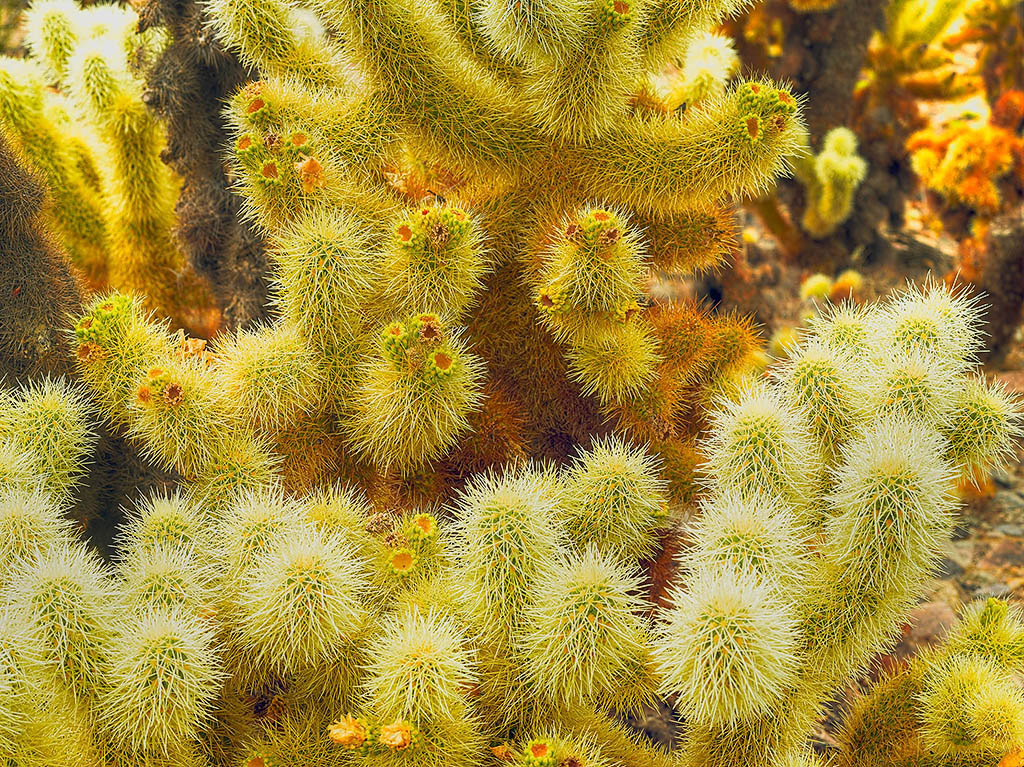
Teddybear cholla (Cylindropuntia bigelovii) at Joshua Tree National Park image Free stock
Cholla cacti are some of the most common cacti growing naturally in deserts across the southern United States and Mexico. Fun Fact Several species of cholla have earned themselves the nickname "jumping cholla" due to a unique trick.
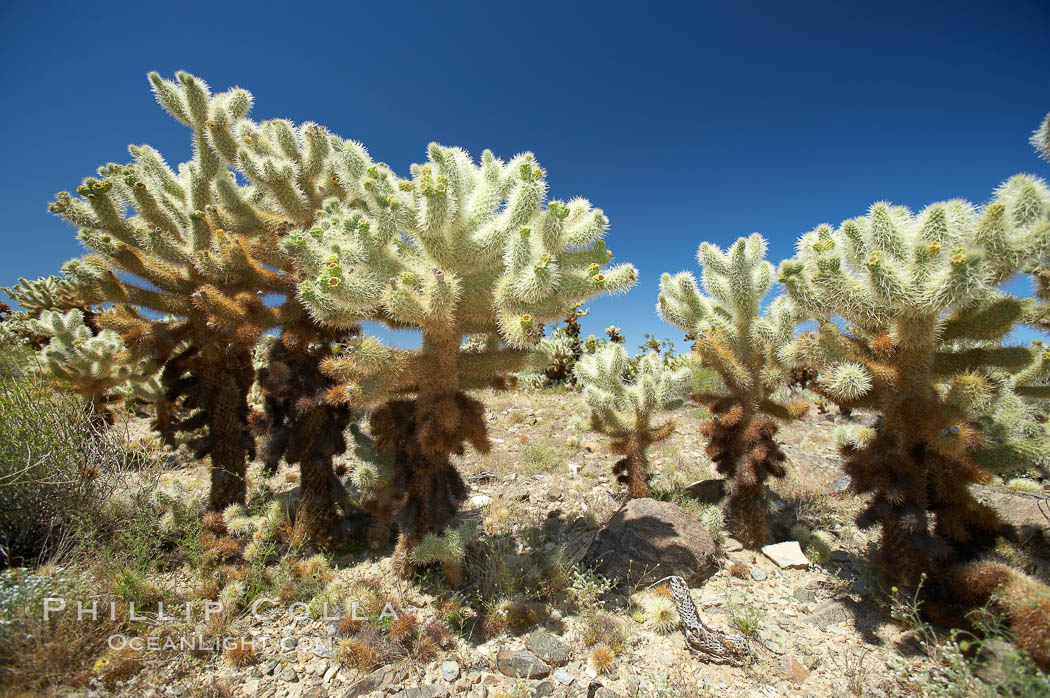
TeddyBear cholla cactus, Opuntia bigelovii, Joshua Tree National Park, California
The Joys of Cholla (Cylindropuntia) In Baja California recently I was showing off my knowledge of native succulents when one "got" me. The friend who was taking a video with my phone gasped when I unsuccessfully tried to set a 3-inch-long chunk of cholla ("choy-ah") cactus back onto a boulder. It resolutely clung to my fingers.
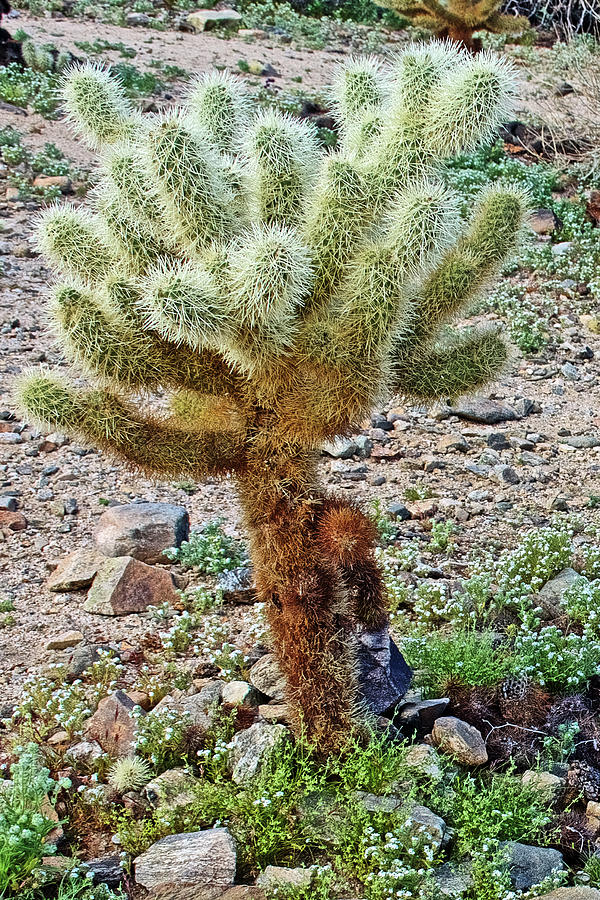
Teddy Bear Cholla Cactus with Popcorn Flowers at the Base in Joshua Tree National Park
Jumping cholla, also known as teddy bear cholla (Cylindropuntia bigelovii). Chollas vary in size, from low branching cacti to small trees about 3 metres (10 feet) in height. They have small flowers, sometimes chartreuse and inconspicuous but more commonly of more-striking colours.

The Tale of the Jumping Teddy Bear Cholla Cactus Earthwalkabout
By Mary H. Dyer last updated February 12, 2022 Jumping cholla, also known as teddy bear cholla or silver cholla, is an attractive but rather odd-looking cactus with dense masses of spines that give the cactus a teddy bear appearance, hence the cuddly nickname. Where can you grow teddy bear cholla?